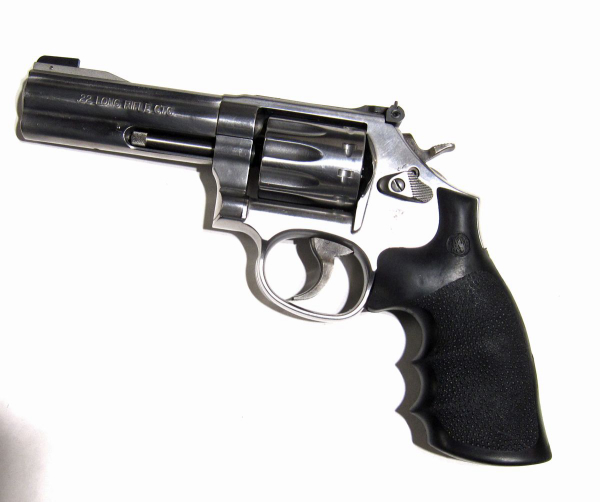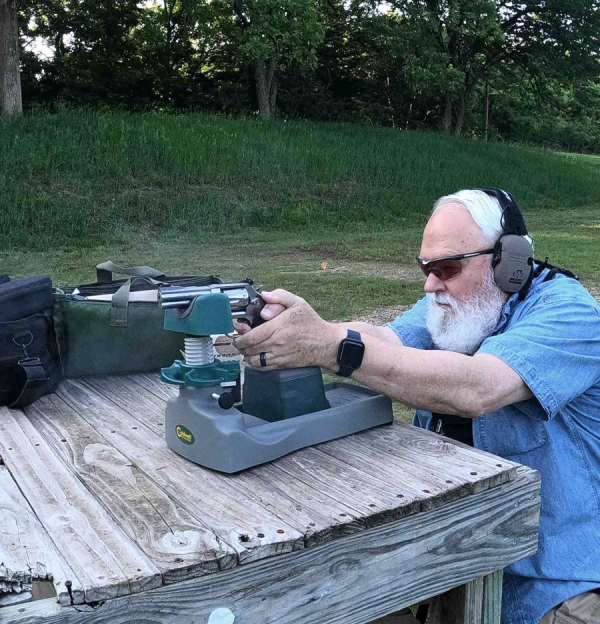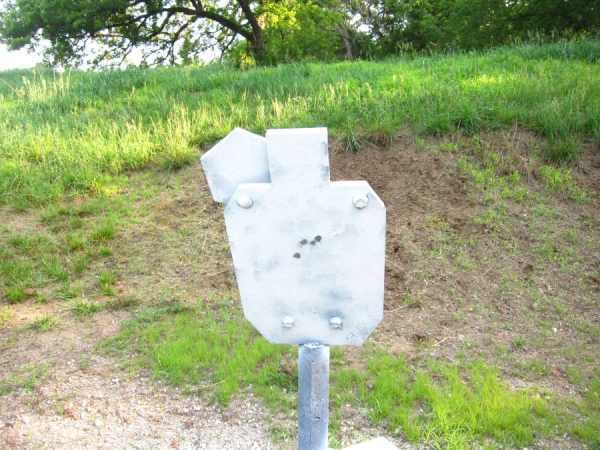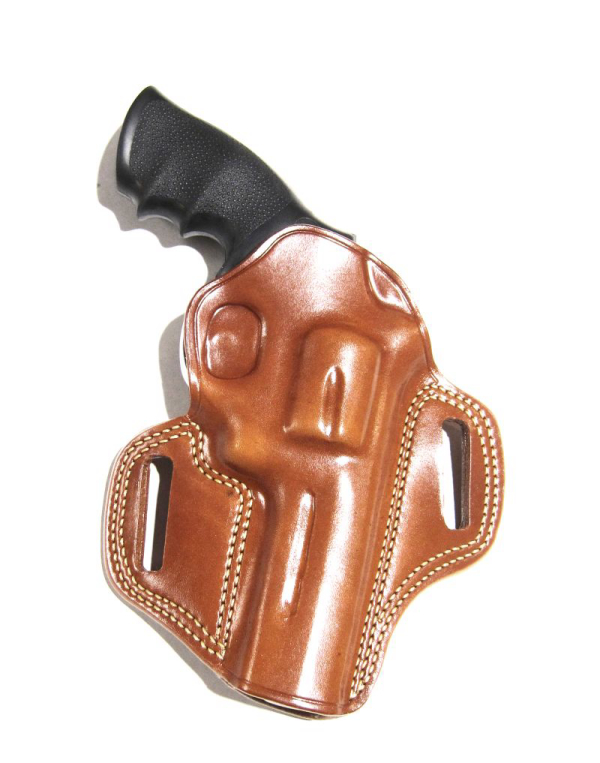Originally written about here, I set about for a range trip to shoot a recently arrived, used, Smith & Wesson Model 617 revolver – a four-inch – and was happy with the performance. An excellent size for a field revolver, it’s a holster gun that doesn’t get in the way if you’re working out of a truck or an ATV. It’s also a smart plan for those who need trigger practice for a lower per-shot cost than centerfire guns.


I began the test with the heavy (just over 40 oz.) 22 revolver from a seated rest. The table happened to be sixteen yards from the target (it’s where the table was and I left it). I tried three different loads for accuracy and zero.
Federal AutoMatch shot into 3 ¾” with the first group. The second group, after some sight adjustment, was 3 7/8” with a flyer. The best three hits went into 2 ½”.
CCI Standard Velocity struck low compared to the faster AutoMatch load. It yielded a similar group, 3 ½”, for the first effort. On my second try, the group was a 2 7/8” cluster with three hits into 1 ½”.
Winchester SuperX 40 gr. Power Point put five hits into 1 3/8” on the first effort.
Does the gun like it or was it the “training effect?”
The second try gave a similar 1 5/8” result – close enough.

To get up and move around, I did a ‘walk back’ exercise on a steel “1/2 size” IPSC silhouette. The target measures 11” wide by 17” high with a 4” x 4” head box.
At ten yards, I put a pair onto the headbox. From 20 – 25- 35 yards, I shot pairs into the center. On the 6x6” swinging plate (heavy enough that the 22LR won’t swing), I placed a pair from 25 yards.
Using a B-8 repair center, I shot a “ball & dummy” exercise at seven yards using a center hold. Black sights on a black target – at close distance – isn’t that big a deal.
The results were one hit in the “9” ring, two into the “10” and seven hits into the “X” ring.
I was happy with that.
To end my range session with the DA 22, I shot a “one-hole” drill two-handed from five yards. The objective is to put every round through a single (over-caliber size) hole. This requires patience, grip and focus. I started with a right-handed string on the target’s barcode. That resulted in one long hole.
For a left-handed experience, I shot on the target’s trademark with the same objective. Left-handed, I got four bullets into 1” about ¾” below the trademark due to mechanical offset.
On a succeeding trip to the range, I elected to try a variant of “Rastoff’s Challenge.” A course I found on the internet, it’s to be fired on the NRA B27 repair center. Only rounds inside the tie-breaking X-ring count as “hits.”
With no timer – accuracy is king – four rounds are fired from 3 yards. At five yards and seven yards, you put six rounds into the ‘X’ from each distance. You finish with four hits from ten yards. A total of 20 rounds, it’s an exercise in consistency of grip and task-focus.
This exercise, which I dubbed the “Rimfire Rastoff,” uses the B8 bullseye repair center instead of the B27. My standard was that shots fired from 3, 5, and 7 yards had to be fired into the X ring (1 5/8”) to count.
With the M617 I used CCI Standard Velocity. The result was miserable. It wasn’t the revolver’s DA trigger, but using black sights over a black target. Whereas I’d had a good experience earlier, it was difficult for me to see the sights as they blended in with the shaded portion of the target.
At 3 yards, I had 1-10, 4-Xs and at 5 yards, I had 6 Xs. From seven yards, I fired two tens and four Xs. Already not a passing performance, I posted a “10-ring” hit, way out from the X, a line cutter, and a nine (likewise way out), both at 4 o’clock.

While I was about it, I found packing the heavy 22 revolver is made a lot easier with the Galco Combat Master belt holster. A pancake-style design, it’s less meant for field use than for concealed carry of (in this case) K-frame revolvers. It’s secure – the gun fits deeply in leather – and it’s quick to draw from. It rides high and that helps keep the gun close. I recommend it.
Finally, I finished with slow fire offhand at 25 yards using Winchester SuperX. Shooting single action, I shot one-handed. The first string was with my right hand, yielded a 42/50. The second string was shot left-handed. That effort gained 41 points for a total of 83/100.
The gun is capable of more accuracy than I am. I’m painting up the front sight for some contrast then I’ll get back at it.
-- Rich Grassi